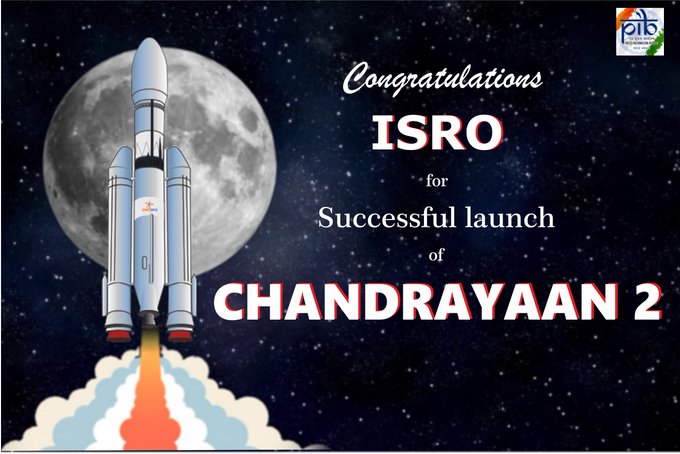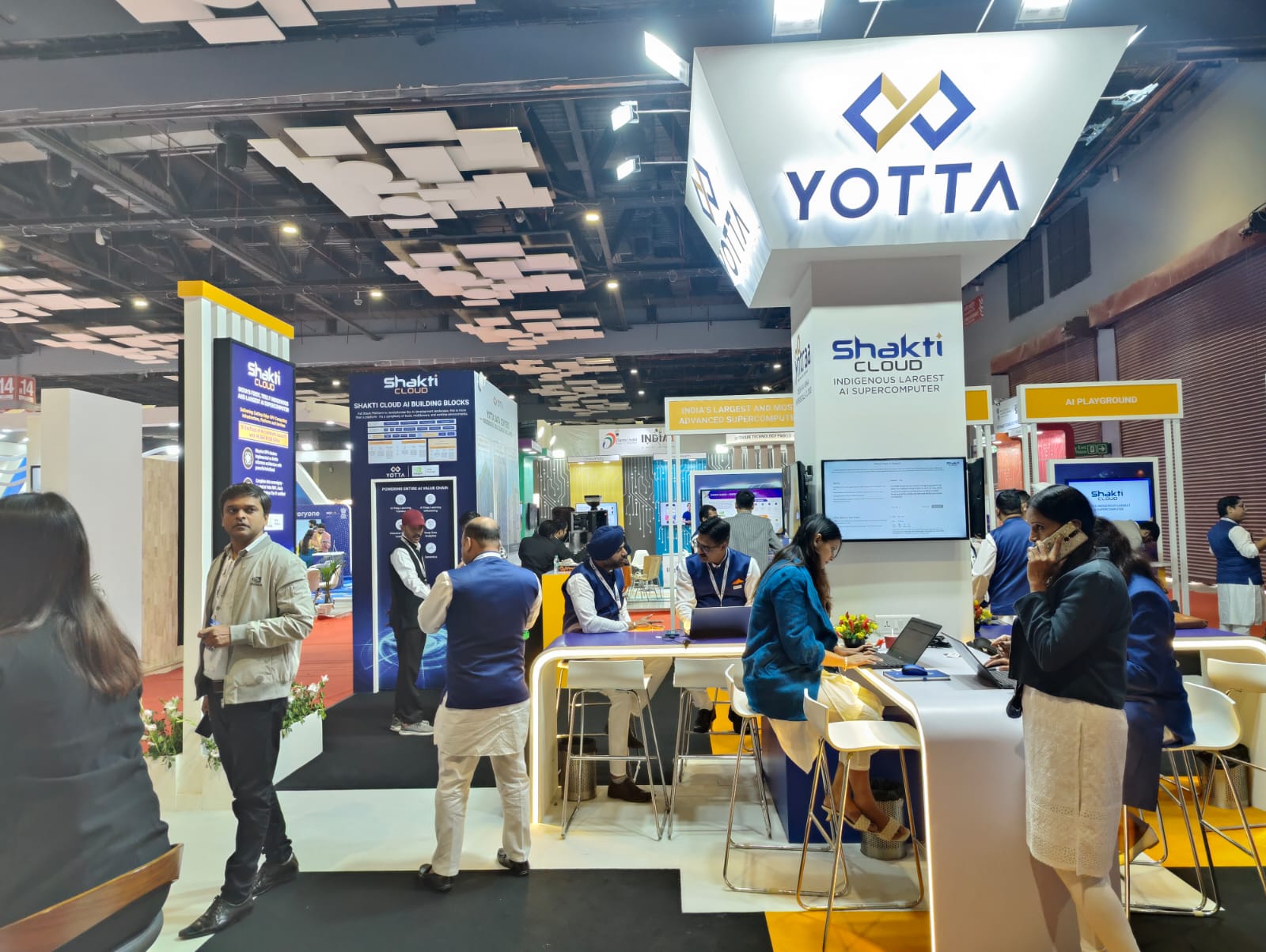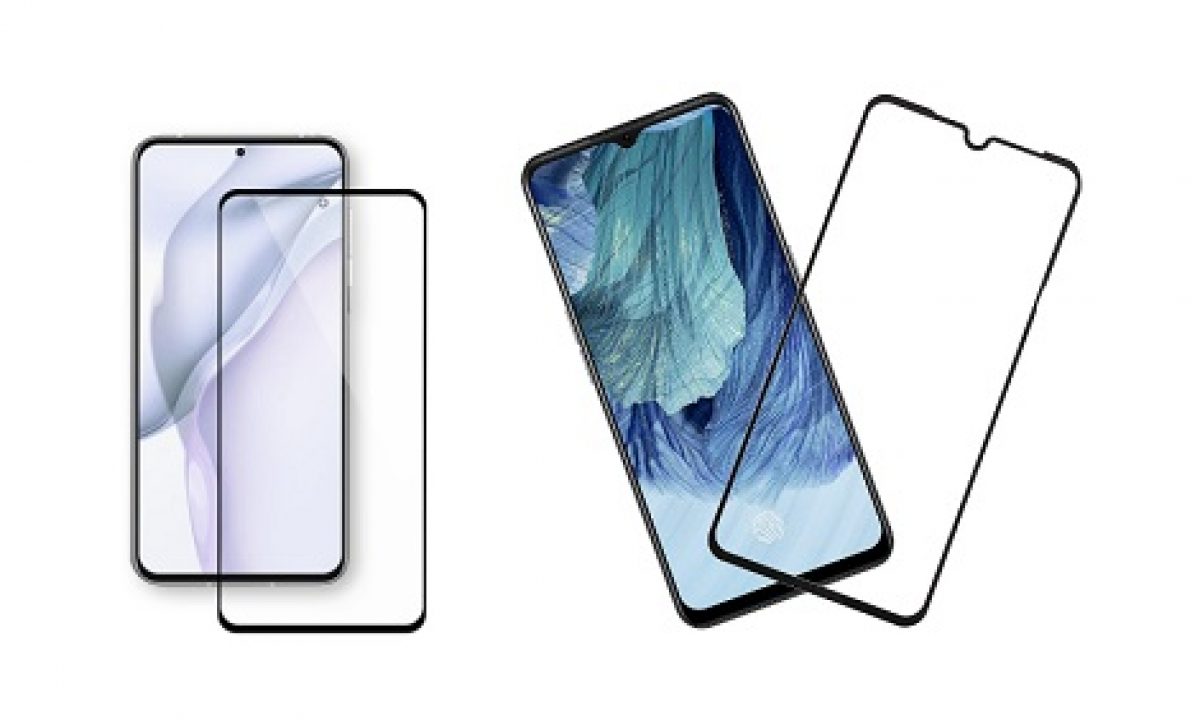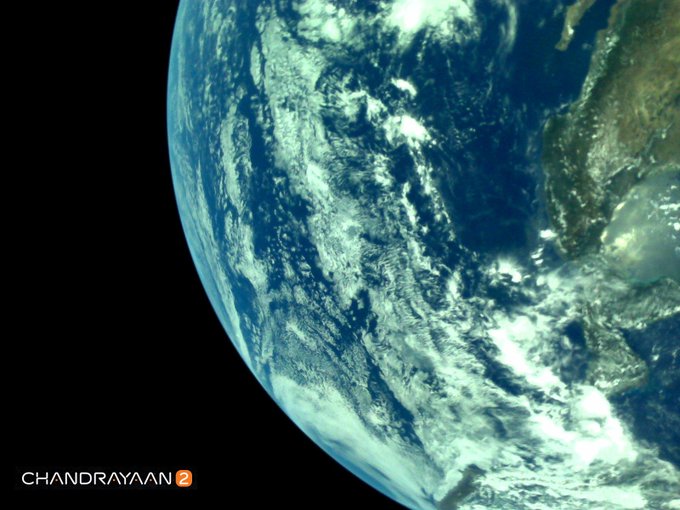News
India’s second moon mission launched successfully

By S Vijay Karthik
SRIHARIKOTA: Aiming to take a billion dreams to the moon, India Monday successfully launched its second lunar mission Chandrayaan-2 onboard its powerful rocket GSLV-MkIII-M1 from the spaceport here to explore the unchartered south pole of the celestial body by landing a rover.
The geosynchronous satellite launch vehicle lifted-off from the Satish Dhawan Space Centre here into cloudy skies at 2.43 pm and successfully placed the 3,850-kg Chandrayaan-2 into the earth orbit about 16 minutes later.
The mission’s success brought in huge relief for ISRO scientists after the July 15 launch was called off just about an hour left following a technical glitch in the rocket.
The Rs 978 crore mission, that will mark a giant leap in India’s space research and make it only the fourth country to have landed a rover on Moon, was rescheduled to Monday after scientists corrected the technical glitch in the three-stage rocket.
In a textbook launch, the towering GSLV-MkIII-M1 lifted off majestically from the second launchpad at the Satish Dhawan Space Centre here, over 100 km from Chennai, as the Indian Space Research Organisation scientists broke into jubilation.
Scientists led by ISRO chief K Sivan watched the launch sequence in rapt attention and broke into applause after every key stage of the rocket’s flight which progressed precisely as programmed.
A visibly relieved Sivan, who announced the success of the mission, said “it is the beginning of a historical journey of India towards the moon.”
“We bounced back in flying colours after the earlier technical snag,” he said about the glitch that made the space agency reschedule the Chandrayaan-2 launch from July 15 to Monday.
There will be 15 “very crucial manouvres” in the next one and half months before the satellite is brought around the moon, he said in his post-launch address from mission control centre.
“After that the D-Day will come and on that day we are going to experience 15 minutes of terror, to ensure the landing is safely near the South Pole,” he added.
ISRO had last week called off the launch with just 56 minutes of the countdown left, a decision that was later hailed by space experts as a prudent measure not to risk the mission.
After taking remedial action based on an analysis carried out by a team set up to look into the snag, the space agency announced the rescheduled lift-off four days ago, indicating the confidence of the scientists which stood vindicated with the successful launch.
“Chandrayaan 2 is ready to take a billion dreams to the moon now stronger than ever before! Join us for the launch on Monday 22 July, 2019 at 2:43 PM IST,” ISRO had tweeted on July 18 while announcing the rescheduled launch.
Chandrayaan-2 comes 11 years after ISRO’s successful first lunar mission Chandrayaan-1 which scripted history by making more than 3,400 orbits around the Moon and was operational for 312 days till August 29, 2009.
The 43.43m tall three stage rocket GSLV-MkIII-M1 dubbed as ‘Baahubali’ for its ability to carry heavy payloads, successfully placed the Chandrayaan-2 in the Earth orbit, ISRO said.
Chandrayaan-2, a three-component spacecraft comprising an orbiter, lander and a rover, will undergo 15 crucial manoeuvres before landing on the Moon, expected by the first week of September.
Scientists would make a soft landing of the lander in the South Pole region of the moon where no country has gone so far.
Billed as the most complex and prestigious mission undertaken by ISRO since its inception, Chandrayaan-2 will make India the fourth country to soft land a rover on the lunar surface after Russia, the United States and China.
About 16.20 minutes after the lift-off, the GSLV rocket placed Chandrayaan-2 into 170 km x 39059 kms Earth orbit.
From here onwards, the mission will undergo a series of manoeuvres by scientists to carry out different phases of the mission over the next 48 days.
Subsequent to the rescheduling of the launch, the space agency has tweaked the orbital phases, increasing Earth-bound phase to 23 days as against 17 days planned originally.
At the end of the Earth-bound phase, the orbit of the spacecraft will be finally raised to over 1.05 lakh km before nudging it into the Lunar Transfer Trajectory taking it to the proximity of Moon in the next two days.
Then gradually over the next few days it will be brought to 100 X 100 km circular orbit when the lander will separate and after another few days of orbiting it will make a soft landing at a chosen place on the Lunar surface.
The soft landing of the lander – Vikram carrying rover ‘Pragyan’, one of the toughest phases of the mission and described by the ISRO chief as “15 minutes of terror (filled moments), would be attempted between September 6-8.
“Chandrayaan-2 is the next leap in technology as we attempt to soft land close to South Pole of Moon. The soft landing is extremely complex and we will experience approximately 15 minutes of terror,” Sivan had said.
The mission, which carries a total of 13 payloads, including three from the Europe, two from the US and one Bulgaria, seeks to improve understanding of the moon which could lead to discoveries that will benefit India and humanity as a whole.
A Laser Retroreflector Array (LRA) of US space agency NASA is among the payloads and is aimed at understanding dynamics of Earth’s moon system and deriving clues on Lunar interior.
According to ISRO, the lunar South Pole is an interesting surface area which remains in shadow than North pole.
There is a possibility of the presence of water in permanently shadowed areas around it, the agency said, adding craters in the South Pole region have cold traps and contain fossil record of the early solar system.
The lander ‘Vikram’, named after father of Indian space research programme Dr Vikram A Sarabhai, carrying the rover ‘Pragyan’, will be landed in a high plain between two craters at a latitude of about 70 degrees South of the moon.
Then the 27-kg ‘Pragyan’ meaning ‘wisdom’ in Sanskrit and a six-wheeled robotic vehicle, will set out on its job of collecting information on lunar surface.
A safe site free of hazards for landing would be decided based on pictures sent back by the camera onboard the lander and after touchdown the rover will carry out experiments for 14 Earth days, equals one Lunar Day.
The launch was witnessed by nearly 5,000 people who were accommodated at a viewing gallery, located a few kms from the launchpad, thrown open to the public by the ISRO in May last.
Source: Press Trust of India
News
Yotta’s Cloud Data Center in GIFT City, Gujarat goes live

NEW DELHI: Yotta Data Services, an end-to-end Digital Transformation service provider, has announced that its state-of-the-art data centre facility, “Yotta G1”, located in GIFT city, Gandhinagar is ready for service (RFS).
The opening of this data center marks the debut of Yotta in Gujarat and progresses the company’s mission to provide digital services in India’s high-growth markets.
G1 is Yotta’s fifth data center facility in the country. It joins four large operational data centers, two of which, at Navi Mumbai and Greater Noida are part of hyperscale campuses. Yotta G1 is uniquely located inside the International Financial Services Center (IFSC) zone of Gandhinagar’s Gujarat International Finance Tec-City (GIFT city).
G1 represents an investment of more than INR 500 cr. over five years across critical non-IT and IT / Cloud / AI compute infrastructure. The data center has a capacity of over 350 high-density racks and 2 MW power (which can be scaled further as per demand). The facility is designed to meet the most demanding digital needs of its customers, who may be located within GIFT City or anywhere in the world, by seamlessly delivering fault-tolerant facility infrastructure, high-performance Cloud compute and storage infrastructure, advanced physical and cyber security, unmatched connectivity, and steadfast sustainability.
For large global enterprises operating in the GIFT City IFSC zone, the G1 data center functions as a potential data embassy, whereby their data stored is subject to the laws and regulations of their home country, thus allowing them to maintain sovereignty over their data, even when stored in India. By storing data in a physically different location, global enterprises can ensure continuity of operations in case of major disruptions within their borders. The data center’s location also ensures compliance with the IFSC regulations, providing businesses in the zone with distinct advantages like free foreign exchange convertibility, a liberalised regulatory environment, and business-friendly policies. It also helps enterprises adhere to IFSC’s compliance requirements, including being mandated to host their data within the IFSC zone.
Commenting on the announcement, Darshan Hiranandani, Co-founder and Chairman, Yotta Data Services, said, “The state of Gujarat, with GIFT City, has been at the forefront of providing a viable and sustainable platform for global businesses to set up base in India. The setting up of the IFSC zone is a further testament to their vision for financial services companies. We are proud to support this vision of the Gujarat government with a state-of-the-art data center within the IFSC zone, providing the latest and best in cutting-edge technologies to help businesses set up and scale their businesses while also adhering to all regulatory requirements.”
Adding to this, Sunil Gupta, Co-Founder, MD & CEO, Yotta Data Services, said, “Yotta’s G1 marks a pivotal milestone in delivering high-end data center, Cloud, AI compute, storage, connectivity and cybersecurity services to enterprises both on a global and local scale in the Gujarat region. Besides serving the domestic enterprises within and outside GIFT City, our data center shall serve as a potential data embassy for global enterprises, enabling them to adhere to their respective country’s laws while offering a dependable and secure locale for offshore data storage.”
G1 data centre stands distinct in GIFT city for being a data center offering more than just colocation services. True to Yotta’s stature as the end-to-end digital transformation partner of choice for enterprises, G1 brings forth a suite of key features, ranging from advanced data security and customised business solutions to an indigenous hyperscale cloud offering, AI-GPU compute offering, state-of-the-art infrastructure, cybersecurity expertise, seamless integration with managed IT services, 24/7 customer support, cost optimisation, and an overall competitive edge.
This announcement follows on the heels of Yotta’s recent launch of its cloud services – Shakti Cloud and Yntraa Cloud. Powered by NVIDIA’s top-of-the-line GPUs, Shakti Cloud is India’s largest & fastest AI-HPC supercomputer, delivering cutting-edge GPU computing infrastructure, platforms, and services, including Infrastructure as a Service, Platform as a Service, and Software as a Service. Yntraa Cloud, on the other hand, is a truly indigenous hyperscale cloud platform at par with global cloud platforms, offering an exhaustive range of cloud products and services.
News
Optiemus Infracom joins hands with Corning International

NEW DELHI: Domestic contract manufacturer Optiemus Infracom has entered into a joint venture with US-based speciality glassmaker Corning International to set up India’s first manufacturing facility for producing high-quality finished cover glass parts for the mobile consumer electronics industry.
The collaboration between both the companies will help expand India’s electronics manufacturing ecosystem, as the Indian government strengthens its Make in India initiative. As a part of the joint venture, the companies strategically aim to set up a world-class manufacturing facility in India, powered by cutting-edge technologies and processes.
Driven by a shared commitment to innovation and technological excellence, this collaboration will pave the way for the manufacturing of “Made in India” finished cover glass parts for use in mobile consumer electronic devices, and other cover glass applications, to meet the needs of next-generation mobile consumer electronic devices.
The joint venture signifies a powerful synergy between Optiemus’s deep domestic industry and manufacturing knowledge of electronics and telecom market and Corning’s globally-acclaimed expertise in advanced glass technology. By combining these strengths, the joint venture aspires to not only establish cover glass manufacturing capabilities and capacity in India, but also to contribute significantly to the creation of jobs and skill development within India’s thriving technology sector, the companies said in a statement.
Ashok Kumar Gupta, Chairman, Optiemus Infracom, said, “It is a matter of great pride for us to actively contribute to the growing manufacturing ecosystem in the country. With this joint venture, initiated in line with the vision of Hon’ble Prime Minister of India of ‘Make in India’ programme and the “Atmanirbhar Bharat” initiative, we are committed to make available world-class high-quality products for global and local brands.”
“Embarking on this new journey, we intend to emerge as one of the top manufacturers of finished cover glass parts for use in mobile consumer electronic devices in the next five years. Our collective expertise in innovation, design, and manufacturing, will provide holistic solutions for the brands,” Gupta added.
5g
MediaTek Catch-up with Tech: Infinix Zero 30 5G with Dimensity 8020 launched

NEW DELHI: Chipset maker MediaTek, which claims to power more than two billion connected devices every year, hosted ‘Catch-up with Tech’ in collaboration with handset brand Infinix on August 28 to share insightful and engaging conversations about the new-age smartphones and innovative technologies powering everyday lives.
The meet-up threw the spotlight on the MediaTek Dimensity Auto, Satellite solutions and Generative AI along with an extensive showcase of newly-launched Infinix Zero 30 5G powered by MediaTek Dimensity 8020, Infinix GT 10 Pro powered by MediaTek Dimensity 8050, and Infinix QLED TV powered by MediaTek.
In terms of specs, the Infinix Zero 30 5G is tailored for young storytellers and creators, featuring the first-ever smartphone to deliver 4K 60fps video recording from its 108 MP OIS rear camera and ultra-high resolution 50MP front camera. The Zero 30 series powered by MediaTek Dimensity 8020 is said to be a game changer for the front camera vlogging experience along with being the slimmest curved AMOLED smartphone in the segment with glass and a vegan leather back panel. It also claims to be one of the most premium-looking devices in the segment.
The event witnessed a panel discussion moderated by Anuj Sidharth, Deputy Director Marketing & Corporate Communications, MediaTek and included expert panelists from Infinix, MediaTek and two renowned professional photographers.
“With the fifth edition of Catch-up with Tech, we aim to bring consumers closer to the technology and enable them to make informed buying decisions based on their diverse needs. In collaboration with Infinix, this meet-up is in-line with MediaTek’s vision of technology democratization and making innovative technology accessible to everyone,” said Anku Jain, Managing Director, MediaTek India. “The MediaTek Dimensity 8020 in Infinix Zero 30 5G brings faster displays, brilliant cameras and ultra-fast performance. Further, MediaTek Imagiq technologies enrich the capture experience by combining dedicated AI, imaging processors and accelerators to provide incredible results,” he added.
Anish Kapoor, CEO, Infinix Mobile India, said, “Featuring India’s first 50MP 4K 60 fps video recording, Infinix Zero 30 5G is primed to redefine smartphone imaging capabilities, setting a new standard for the creators and vlogging enthusiasts. Our collaboration with MediaTek has played a pivotal role in shaping our exceptional smartphone portfolio, and the Zero 30 5G stands as evidence of our unwavering commitment to innovation and delivering unmatched experiences to our users. The display and design of the device represent a leap forward in smartphone technology. As Infinix Zero 30 5G hits the shelves, we are positive that our customers will find this new offering as exhilarating as we do, further empowering creators to capture their story like never before.”
Radhakrishnan Chakyat, a photography evangelist, founder and host of Pixel Viilage, said, “Infinix Zero 30 5G smartphone powered by MediaTek Dimensity 8020 chipset has amazing hardware features, an excellent camera, dual-view video mode and is primed for optimal content creation and saves a tremendous amount of editing time.”
Aarzoo Khurana, a wildlife photographer, said, “Over the last few days, I clicked various pictures and recorded a few videos with the newly-launched Infinix Zero 30 5G powered by MediaTek Dimensity 8020, and the experience has been truly inspiring. Infinix’s smartphone’s OIS feature helps content creators click shake-free pictures and the front camera, which is extremely sharp and detailed, enables content creators to click countless selfies.”






